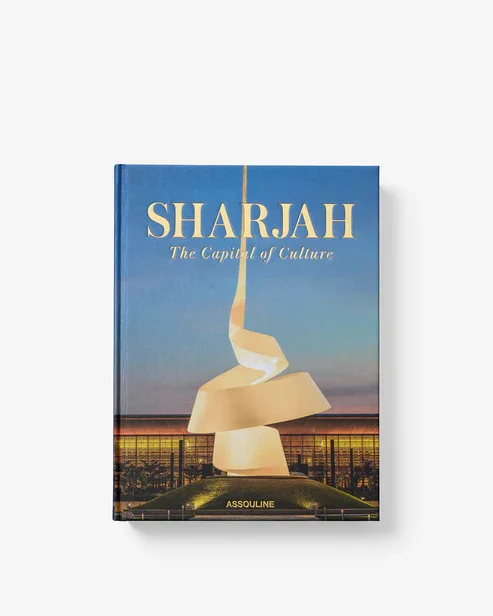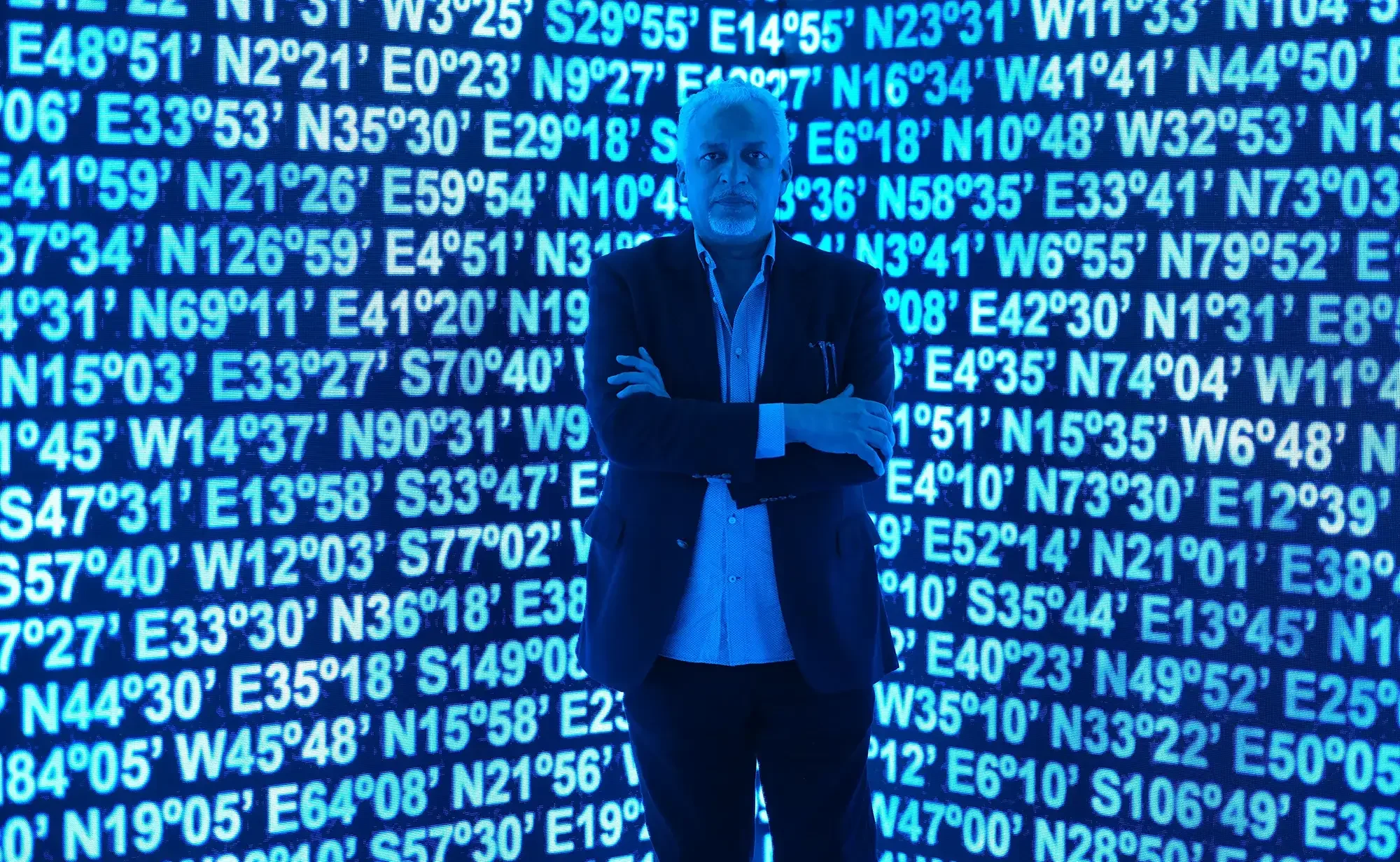The rising sun has, for millennia, signalled hope, renewal, and the promise of new beginnings. In the exhibition As the Sun Appears from Beyond, these ideas are reignited through the lens of Islamic art and tradition. Light, both metaphorically and conceptually, serves as the exhibition’s guiding force, offering spiritual insight as well as a curatorial framework that connects past and present. It offers a platform not only for aesthetic reflection, but for deeper understanding: a space where viewers can encounter the spiritual, historical, and contemporary expressions of Islamic culture, and find common ground in its beauty.
Read MoreWhen visitors step into the sweeping atrium of Zayed National Museum this December, many will pause in awe at the magnificent arcs of steel and stone, which resemble falcon wings soaring skyward. Designed by Foster + Partners, the building is both a remarkable sculptural monument and a symbolic landmark: a national museum housed in a structure of architectural brilliance rising from the sands and mirroring the strength and grace of the United Arab Emirates’ cultural heritage.
Read MoreNestled in Mina Zayed, an industrial area punctuated with shipping containers and the smell of salt hangs, lingering in the air, Madar_39, or M_39 as it is commonly known, blossoms. Inside the building, a collection of shared working spaces and individual offices, and studios, there is a quiet buzz of activity.
Read MoreSharjah: The Capital of Culture published by Assouline in collaboration with Shurooq. Author: Anna Seaman.
Read MoreShaima Rashed Al Suwaidi assumed the role of CEO of the Arts, Design, and Literature Sector at Dubai Culture and Arts Authority [Dubai Culture] in April 2025. Her appointment follows a distinguished career in strategic communications and cultural advocacy, including senior roles within different entities in Dubai as well as memberships in Dubai Media Diplomacy and Communication Network in the Government of Dubai Media Office and a member of the General Network of Government Communication in The Executive Council of Dubai. Her expertise in marketing and storytelling has been instrumental in positioning Dubai as a creative centre of global significance and is now shaping how the emirate invests in and supports its homegrown talent.
Read MoreIt is 20 years since Sunny Rahbar, Claudia Cellini and Omar Ghobash joined forces to open The Third Line, a contemporary art gallery in Dubai. It was 2005, and a time when outlets for creativity from the Middle East and wider region were much needed in the simmering aftermath of 9/11.
Read MoreMohammed Kazem engages with the world as a field of continuous movement, to which his practice responds across shifting forms. Light, sound, and space migrate from the intangible to become his materials. “I create from everything, from shadows, colours, coordinates—even the distance between me and you is a medium,” he says.
Read MoreIn the once densely populated northwestern quarter of Gaza City, Qasr Al Basha was erected in the 13th century as a fortress for a Mamluk sultan. Its limestone structure, geometric patterns, domes, and intersecting vaults endured for centuries. It bore witness to the rise and fall of the Ottoman Empire, once housed Napoleon Bonaparte during his military campaign to Egypt, and later served as a police station during World War I. Abandoned in 1967, the building was placed under UN protection in 1998 and opened as Gaza’s national museum in 2010. By the end of 2023, the palace had been severely damaged, resulting in the loss of thousands of historical artefacts.
Read MoreMaryam Al Falasi is dedicated to building an ecosystem, establishing a true collecting culture, and elevating regional voices. Iris Projects, her independent gallery in Abu Dhabi’s MiZa cultural district, focuses on contemporary art from the Gulf, with a programme that supports emerging and mid-career artists through solo shows, collaborations, and public programming.
Read MoreAn exhibition at Sharjah’s Maraya Art Centre showcases tatreez as a powerful aesthetic force.
The unwoven threads in Areen Hassan’s work hold almost as much significance as their embroidered counterparts. The gaps between them signify the growing distance between the Palestinian people and their land, but also the enduring connection.
Read MoreIn Arabic, the work that gives its name to the title of Afra Al Dhaheri’s first institutional show—Restless Circle, open until December 14 at Sharjah Art Foundation—is a poetic concept. Dā’ira hā’ira is a rhyming expression: “dā’ira” means circle, while “hā’ira” suggests uncertainty or, metaphorically, spinning in circles.
Read MoreDubai’s Efie Gallery, which since its launch in 2021 has established itself as a vital platform for artists of African origin, will inaugurate its new space this April with a monumental solo exhibition by the internationally celebrated Cuban artist María Magdalena Campos-Pons. Running from April 11 to May 21, the exhibition not only presents Campos-Pons’ work to the region in a dedicated solo show but also underscores Efie’s commitment to expanding the reach of artists from Africa and its diaspora.
Read MoreIn her opening address at Sharjah Biennial 16, wearing a Palestinian keffiyeh and speaking with indisputable sincerity, Sheikha Hoor Al Qasimi spoke of the ever-greater need for solidarity. It is more than two decades since she took the helm of what is now the oldest biennial in the region, and which attracts a growing throng of international visitors. Throughout, Sheikha Hoor has remained consistent in her support of marginalised voices, a champion of diverse cultures and artistic integrity.
Read MoreAcross six painted panels of tent fabric, which Hashel Al Lamki has fashioned as canvas, a complex narrative unfolds. Watery textures in shimmering colours rise from the heart of the nine-metre polyptych with a vivid intensity of light and a poetic, ethereal quality. On one side, a bird of prey soars overhead and pink flamingos walk beneath an enlarged sun, and on the other Cupid aims his arrow at the fluorescent heavens. This is nature, but not as we know it.
Read MoreRooted in personal history and collective memory, Hazem Harb’s practice explores how exile leaves its mark on architectural form and cultural identity. Born in Gaza and based in Dubai, Harb’s visual language frequently references architectural ruins and archival imagery that evoke the fragility of built environments and the precariousness of home. At once intimate and expansive, his collages, sculptures, and installations explore the physical and symbolic structures shaped by war and exile presenting them not merely as remnants of destruction, but as foundations for belonging and reconstruction.
Read MoreIn the early 1960s, the late Sheikh Zayed bin Sultan Al Nahyan the Founding Father of the United Arab Emirates, invited a team of Danish archaeologists to excavate the Hili site in Al Ain. These excavations were critical to Al Ain, as a result, eleven sites were listed in UNESCO World Heritage Sites in 2011. Having grown up in the area, he was deeply familiar with its terrain, and he naturally sensed its historical importance. These excavations revealed evidence of the existence of agricultural oases in the UAE, dating back more than 3,000 years, in addition to a group of artefacts dating back to the Bronze and Iron Ages. Archaeological research in the country has revealed valuable evidence of the existence of life more than 300 thousand years ago. Archaeological research and excavations will remain a priority in the United Arab Emirates; the efforts are ongoing and will continue well into the future.
Read MoreFound in the heart of Abu Dhabi’s Mina Zayed district, Madar_39 [M_39] has established itself as a key part of the MiZa neighbourhood and a growing hub for cultural and creative activity. The space, described as a “thriving ecosystem of creative and cultural entrepreneurs”, offers a supporting and structured environment for connection and enterprise with a dedication to elevating the growth of the creative sector.
Read MoreMemory, often shaped by nostalgia, trauma, and loss, can distort or idealize the past, while truth, bound by its quest for factuality, may resist the emotional weight of recollection. In the liminal space where personal narratives and collective histories converge and diverge, artists often explore the blurred lines between truth and memory. This piece explores how four artists from the Dubai Collection portray human existence through the lens of social norms, intangible experiences and history within the context of individual and collective memories.
Read More

















